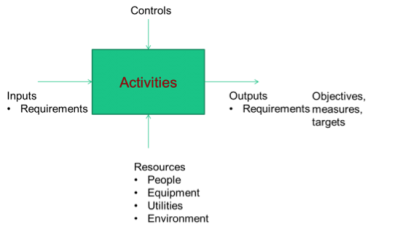Process Mapping is a fundamental component of either waste elimination or variability reduction. Process mapping enables the improvement team to get an understanding of the existing process, to help identify sources of waste and variability. It is the first milestone in the Measure phase, describing the process.
Wikipedia defines states: “Business process mapping refers to activities involved in defining what a business entity does, who is responsible, to what standard the process should be completed, and how the success of the process can be determined. The main purpose behind business process mapping is to assist organizations in becoming more efficient”. We would add to that “or more effective”.
A clear and detailed business process map allows people to look the process and see whether or not improvements can be made to the current process. Process mapping helps people ‘see’ the process, breaking it down into its smaller elements and showing the flow. It also makes issues within the process visible.
Without the map there can be no common understanding of what the process is, so documenting the current state starts the journey of improving the process. Process mapping is also a valuable training & communication tool, which can be used not only at the initial phases of a project but also in the Improve and Control phases as well.
BASIC MAPPING CONCEPTS
Although there are many different approaches to mapping processes, they all share one basic concept. That is a process is an activity that turns inputs into outputs to achieve a specific goal.

All processes consume resources including people’s time, equipment and utilities such as power and most have some kind of controls that determine how the process flows from start to finish. This building block is the basis for most process mapping techniques.
Most organisations will have some kind of documentation that describes the way in which at least some of their processes are carried out. However, if you engage operators of the process in discussion about how the process operates, they will very often describe how the actual process operation varies from what the documentation describes, and also how they think the process should operate.
An example would be an order intake process where the customer information is required to operate the process. The documentation would describe how the order is processed when all the customer information arrives, the actual process may need an extra step after initial entry to go back to the customer to obtain the missing data. The operator would also describe how it would be nice to have all the customer data emailed over in a set format for easy entry: that would be the ideal process!
Anyone that has tried to map a process will also have come across the dilemma of how much detail to consider. For example if you are mapping the order intake process described above, then do you consider how the email is opened, which bit of data is typed onto the system first, or even which keys to press first and when to press enter.
The reason this problem arises that any activity at any level can be described as a process, from the overall organisation to the sales order intake, to the activity of pressing the keys on the computer keyboard. They are all processes in their own right. The best advice is to keep it as high level as possible for as long as possible. Process mapping is best carried out as a team effort. It may be led by an individual but should not be carried out in isolation from others.
In future articles we will look at some process mapping techniques.